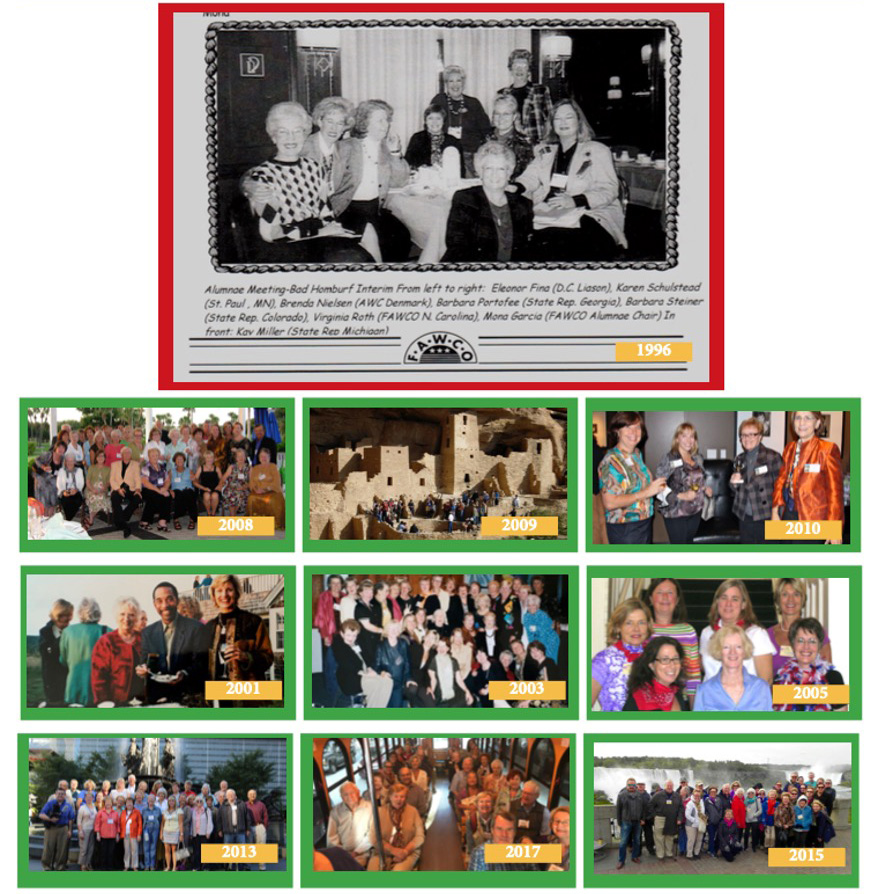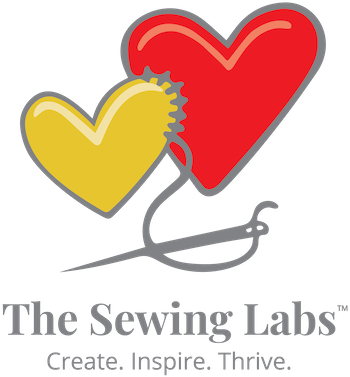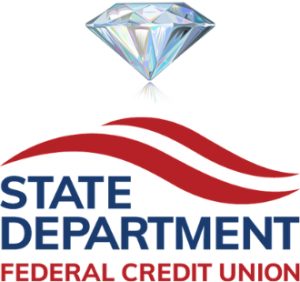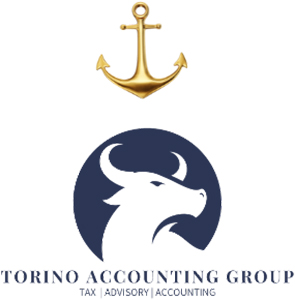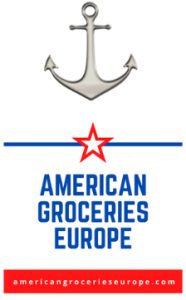By Nancy Thornley, January 21, 2025
The idea of Returning Home became a FAWCO reality in the late 1970’s when Helen Cola of Rome, moving back to Washington D.C., set up a card file of returning expatriates. It became known as FAWCO West. This vision, held by Helen and later by Jackie Isler of Zurich, developed into the Returning Home Committee, created by Jackie in 1980. She believed that FAWCO helped keep alive one’s America-ness while away and, on returning, it would keep alive an International perspective.
The Washington group sent back how-to information on credit, license plates, mortgages, schools, and whatever else pertained to adjusting to life back in the States. Guidelines for Returning to the USA was published in 1983 in response to a survey; it included a chapter on returning children. An on-going ad placed in club bulletins asked ‘Returning to the USA? Don’t let us lose you.’ A map marked the locations of FAWCO alumnae – New York, New Jersey, Connecticut, Boston, Washington, D.C., Maryland, Texas and California.
In 1989 the FAWCO Board appointed Linda Crowley, in Connecticut, as the Alumnae Representative. Using a computer, Linda expanded the membership file and sent out a newsletter. She was succeeded by Karen Burdsall. In 1995 Mona Garcia, returning to Texas from Madrid, set up a more cohesive alumnae group. Dues were collected and a quarterly newsletter published. It was sponsored by a relocation service.
It was Linda who, in 1997 at the Dublin Conference, promoted a first-time-ever FAWCO Conference in the United States to be held in Washington D.C. to celebrate America 2000. When this proposal, not without controversy, was approved, an alumnae committee was appointed and, with Mona Garcia as chair, set off to organize the event.
Twenty-one women – Mona Garcia, Linda Johnson, Linda Sampson, Jude Stalker, Linda Crowley, Kay Miller, Dorothy Childers, Elizabeth Bagney, Eileen Ploumpis, Angela Eliopoulis, Dale Koepenick, Jean Geese, Dona Belt, Nancy Thornley, Helen McNulty, Eleanor Fina, Lisa Chase, Donna Gray, Marilyn Richey, Shirley Van Ooijen, and Brooke Givot – met in Chicago on September 17-20, 1998. The first item of business was the deposit to the Hotel Washington - FAWCO had not provided any seed money. Twenty -one personal credit cards, each charged $500, solved this immediate problem. The group met again in Santa Fe in January 1999 and in Washington the following April and October.
The Conference on March 16-20, 2000, was one of the largest and best attended in FAWCO history.
The Conference Cookbook, edited by Nancy Thornley, was created and sold for the occasion.
FAWCO Alumnae USA (FAUSA) was incorporated in the state of Texas on May 1, 2000. Six alumnae – Mona Garcia, Jude Stalker, Kay Miller, Nancy Thornley, Linda Sampson and Pat Coker – met at Pat’s home in Dunwoody, Georgia, on June 9-14, 2000, and began the process of defining FAUSA. They met again on October 12-15 at Linda Sampson’s home in Dallas; Jane Indreland joined the group. Beginning with its purpose, the details of the organization were worked through – officers, membership, elections, dues, meetings, etc.
Nancy Thornley wrote up the Constitution, Bylaws, and Administrative Guidelines. “The purpose of the Association shall be to facilitate the repatriation experience of its members and to help them maintain their international ties in order to bring about a better understanding between the United States and other nations.”
(The IRS designated FAUSA as a 501( c )(4) when it received its tax exemption on December 10, 2001. In 2016 FAUSA reapplied to the IRS for a 501 ( c )(3) status by making a Bylaw change with a new purpose that included a charitable dimension: “The Corporation shall support the repatriation experience by maintaining an international network and committing its resources to the health, education, environment and human rights of women and children worldwide.” FAWCO had also changed its philanthropic direction by targeting programs to the United Nations goals for women and girls. The new tax status was granted in April 2018. The Bylaw Committee was Karen Snedeker, Chair; Jane Indreland, Nancy Thornley, Dale Koepenick and Rick Chizmadia.)
At its inception in 2000 the new FAUSA group considered itself quite autonomous, not just an appendage of FAWCO. It had its own name, its own Constitution, its own bank account, its own Board of Directors. It even had its own charities; as FAWCO was supporting projects in Africa, FAUSA sought out similar needs in Mexico and South America.
FAWCO was not yet comfortable with the alumnae concept, which had existed as just a committee. It decided to put it into an existing but inappropriate category called ‘Affiliate Club’ which had been set up to be a two-year trial membership for American clubs that already existed overseas. A bylaw change was needed. Finally, in 2003, FAWCO amended its bylaws and FAUSA became its own entity, an equal partner of FAWCO and the FAWCO Foundation.
FAUSA’s Presidents 2000-2025
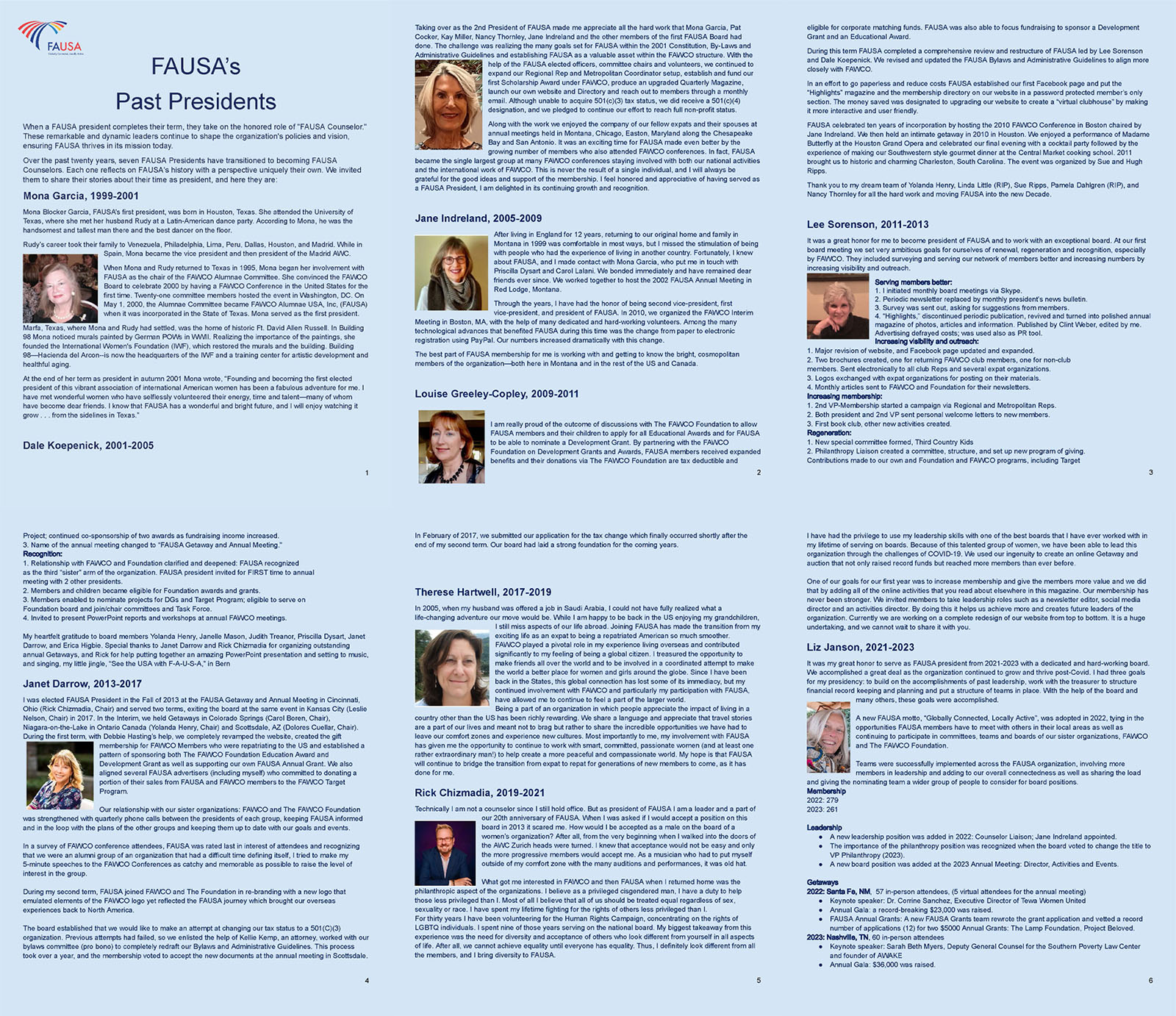 FAUSA has been fortunate indeed to have such strong, talented and creative leaders throughout its 20+ year history. It is through their work and commitment to the organization that it is the success that we enjoy and participate in today. Click here to read about the FAUSA presidents.
FAUSA has been fortunate indeed to have such strong, talented and creative leaders throughout its 20+ year history. It is through their work and commitment to the organization that it is the success that we enjoy and participate in today. Click here to read about the FAUSA presidents.
- Mona Garcia, 1999-2001
- Dale Koepenick, 2001-2005
- Jane Indreland, 2005-2009
- Louise Greeley-Copley, 2009-2011
- Lee Sorenson, 2011-2013
- Janet Darrow, 2013-2017
- Therese Hartwell, 2017-2019
- Rick Chizmadia, 2019-2021
- Liz Janson 2021-2023
- Brenda Brinkley 2023-2027
